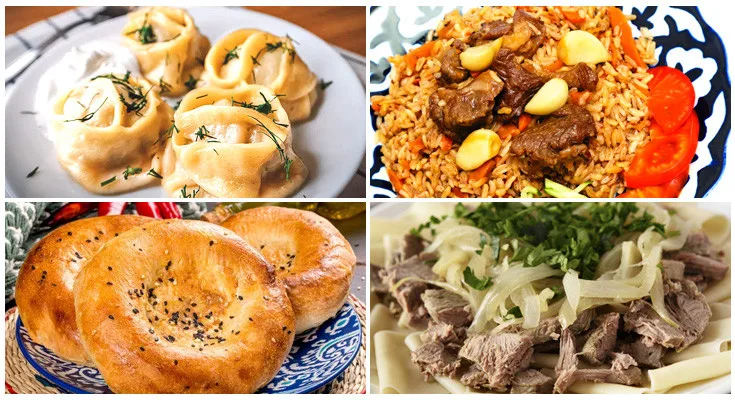Embark on a culinary adventure as we unravel the layers of Traditional Kazakh Cuisine, a cultural treasure trove that reflects the history and diversity of Kazakhstan. From hearty meat-based dishes to delectable pastries, each bite tells a story of nomadic traditions and influences from the Silk Road.
Traditional Kazakh Cuisine: A Gastronomic Odyssey
1. The Nomadic Influence
The soul of Traditional Kazakh Cuisine lies in its nomadic roots. Explore dishes shaped by the nomadic lifestyle, where portable and energy-rich foods sustained the hearty people of the vast steppes.
2. Beshbarmak: The National Dish
Beshbarmak, meaning “five fingers” in Kazakh, stands tall as the national dish. This savory dish comprises boiled meat, usually lamb or beef, served over pasta and adorned with aromatic herbs—a true celebration of simplicity and taste.
3. Samsa: A Pastry Perfection
Delight in the flaky layers of samsa, a pastry filled with minced meat, onions, and spices. This appetizing snack showcases the finesse of Kazakh bakers, with each bite transporting you to the heart of Central Asia.
4. Kazy: A Sausage Saga
Kazy, a traditional horse meat sausage, adds a unique flair to Kazakh cuisine. Often served during special occasions, its distinct taste pays homage to the nomadic reliance on horse meat.
5. Shubat: Fermented Camel’s Milk
Quench your thirst with shubat, fermented camel’s milk. A staple in Kazakh nomadic life, this beverage offers a refreshing twist and a glimpse into the resourcefulness of the Kazakh people.
6. Baursak: Sweet Dough Delight
Indulge in the sweet side of Kazakh cuisine with baursak, deep-fried dough balls often enjoyed during celebrations. The golden-brown exterior hides a soft, pillowy interior—a true delight for the senses.
Similar Articles
Traditional Kazakh Cuisine: Answering Your Questions
What makes Traditional Kazakh Cuisine unique?
Traditional Kazakh Cuisine stands out for its nomadic influences, hearty ingredients, and harmonious blend of flavors that reflect the region’s diverse history.
How is Beshbarmak prepared?
Beshbarmak involves boiling meat and serving it over pasta, creating a dish that encapsulates the essence of Kazakh simplicity and culinary excellence.
Are there vegetarian options in Kazakh cuisine?
While meat holds a significant place, Kazakh cuisine also features vegetarian options like kurt (dried yogurt balls) and various dairy-based dishes.
Can I recreate Kazakh dishes at home?
Absolutely! With the right ingredients and recipes, you can bring the flavors of Traditional Kazakh Cuisine to your kitchen and experience the richness of Central Asian gastronomy.
Is Kazakh cuisine spicy?
Kazakh cuisine leans towards savory and aromatic rather than spicy. Herbs, spices, and natural flavors take center stage, creating a well-balanced and satisfying dining experience.
What role does hospitality play in Kazakh dining traditions?
Hospitality is paramount in Kazakh culture. Guests are often treated to an abundance of food, showcasing the warmth and generosity deeply ingrained in Kazakh culinary traditions.
Conclusion
In conclusion, Traditional Kazakh Cuisine is not merely a collection of dishes; it’s a journey through history, a testament to resilience, and a celebration of community. From the nomadic influences to the rich flavors, each aspect contributes to a culinary tapestry that captivates the senses.









